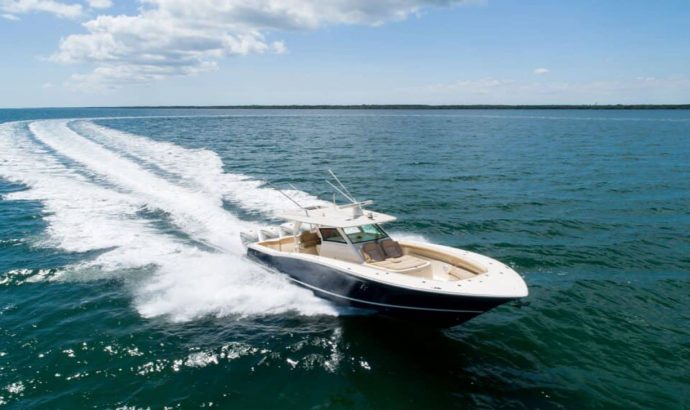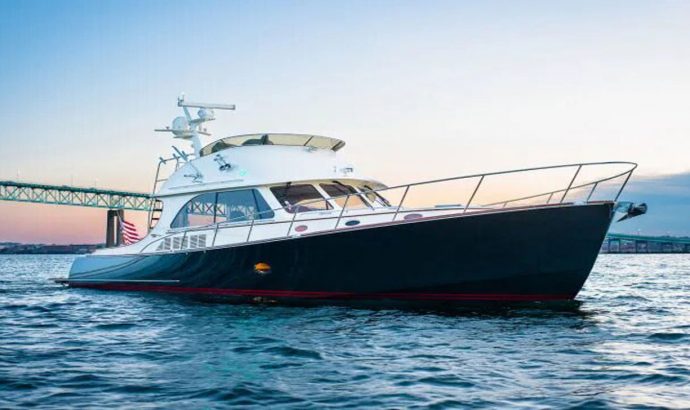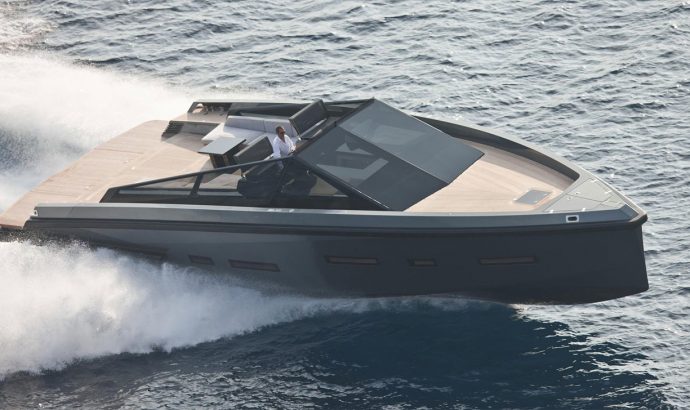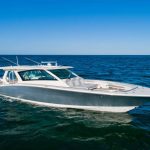FAQ
Why use carbon fiber in marine construction?
Utilizing carbon fiber leads to a lighter, stronger, faster, and more efficient boat.
What is carbon fiber material?
Carbon fibers are high-strength fibers with a diameter of about 5-10 micrometers that are composed of roughly 97% pure carbon atoms. The carbon fiber material used in automotive, aerospace, and marine construction is more specifically known as carbon fiber-reinforced polymer or carbon-fiber-reinforced plastic. In this construction method, carbon fibers are reinforced with resin to create a building material that yields a high strength-to-weight ratio.
How is carbon fiber used in most hull constructions?
Carbon fibers are bundled and processed into technical textiles, they are then embedded together with stabilizing foams and infused with an epoxy resin under a vacuum process. Once impregnated they cured under pressure and temperature.
Is a damaged carbon fiber hull easy to repair?
The short answer is yes, however it will depend on the severity and extent of the damage. Most non-structural or “cosmetic” damage can be repaired by anyone knowledgeable in fiberglass boat repair as the process is very similar.
Is carbon fiber a commonly used building material?
Carbon fiber is indeed a very popular building material used in aviation and aerospace, construction, motorsports and other high-end applications such as boatbuilding. Even the monocoque and other parts of Formula 1 race cars are manufactured out of carbon-fiber-reinforced plastic.
What is on the exterior of a carbon fiber hull?
It depends on the manufacturer but in general most hulls are coated with a Vinylester gel coat.
What are some of the other advanced technology industries using carbon fiber?
Carbon fiber has long been the construction material of choice in aerospace and military industries and it is now becoming the norm in high-level yacht and auto racing.
What is the typical savings in fuel consumption for carbon builds?
50% faster cruising speed but with equal or lesser fuel burn than most fiberglass or metal hulled alternatives.
What size yacht requires a crew?
This depends on your experience and desired level of comfort, however at about the 70’ ft size range a yacht becomes unmanageable without the help of professional crew. Your enjoyment as well as maintaining your investment are worth the addition of crew once you have crossed this threshold.
What is the typical service fee for a yacht broker?
The typical fee associated with a yacht brokerage transaction is 10% of the agreed upon sale price. This fee is paid by the seller and generally it’s divided 50/50 between brokerage houses (assuming both a buying and selling broker were involved).







